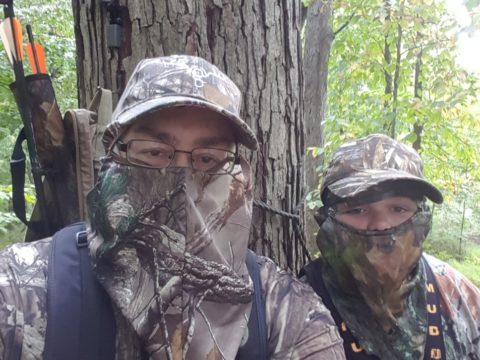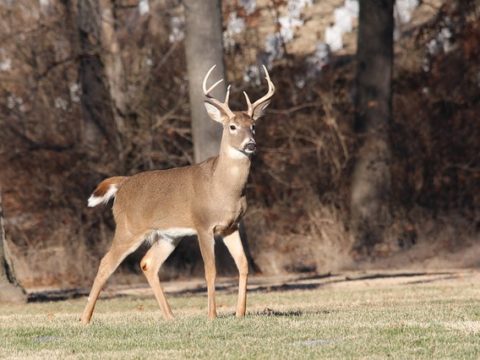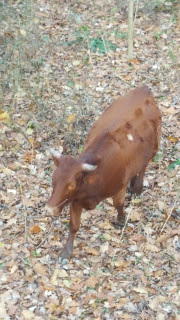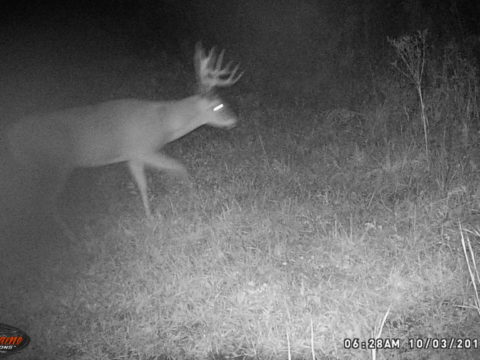
by Eric Hall
While I like seeing bucks in velvet, nothing beats when they shed it and go hard-horned. This is the first sign of the impending hunting season in Ohio and many other states. This is a light switch event in the whitetail world. It is the signal that things just got real.
Early September, around Labor Day, is a good benchmark for when bucks begin to shed their velvet. This is usually true in most states throughout the Midwest. Hunters are finally able to see what has been growing all summer long. The process of shedding velvet normally takes a day or two for a buck to become free of the velvet and display his hard antlers. This is a great time to finalize a “hit list” for your hunting property.
| Trail Camera Photo of a Bachelor Group |
Shedding of velvet also typically coincides with the break up of buck bachelor groups. The demeanor of the whitetail buck changes. Their necks begin to swell and their testosterone continues to build. Whitetail bucks seek to become solitary creatures, especially mature deer. As the bachelor groups break up, a buck’s home range can also change. They just need to get away from other bucks. This remains the theme throughout the remainder of fall and into early winter. They just do not tolerate each other any longer. Why? The competition for the ladies.
When whitetail bucks lose their velvet, immediately their testosterone begins to build. This process continues through September and into late October here in the midwest. Bucks are ready to breed long before a doe is in estrous. During this time, the pecking order of the whitetail buck is established. Dominance begins to be displayed with rubs appearing in early September and through the rut. Whitetail bucks will begin posturing to other bucks who enter their home range. Fights between rivals for breeding rights are common as we close in on the middle to end of October. This pre-rut period is one of the best times to be rattling for whitetail deer. With so much pent-up testosterone coupled with their territorial nature, bucks are prone to respond to rattling. They want to see who is in their area and run them out of town. A herd’s buck to dow ratio will impact this but in general, this is when this calling tactic begins to show effectiveness.
Daylight activity becomes more frequent in late October through the rut time period. A whitetail buck’s need to breed drives what is called seeking behavior. In short, they are seeking the first available doe to pop into estrous. While immature deer show the most visible movement early, almost all whitetail bucks will be on their feet more. They know the time is near and do not want to be late to the party. Bucks begin to travel to doe bedding areas, food sources, etc. Any place that holds doe groups will be checked and checked again by bucks seeking that first available doe. Find the doe and you will find the bucks during the pre-rut and rut phases of the season.
Whitetail bucks losing their velvet is an exciting time of the year. It is a trigger in the whitetail world and for those of us who pursue them. Modifying our behavior to mirror the demeanor of the herd will put us one step closer to closing the deal this fall.
Good luck everyone and be safe!




